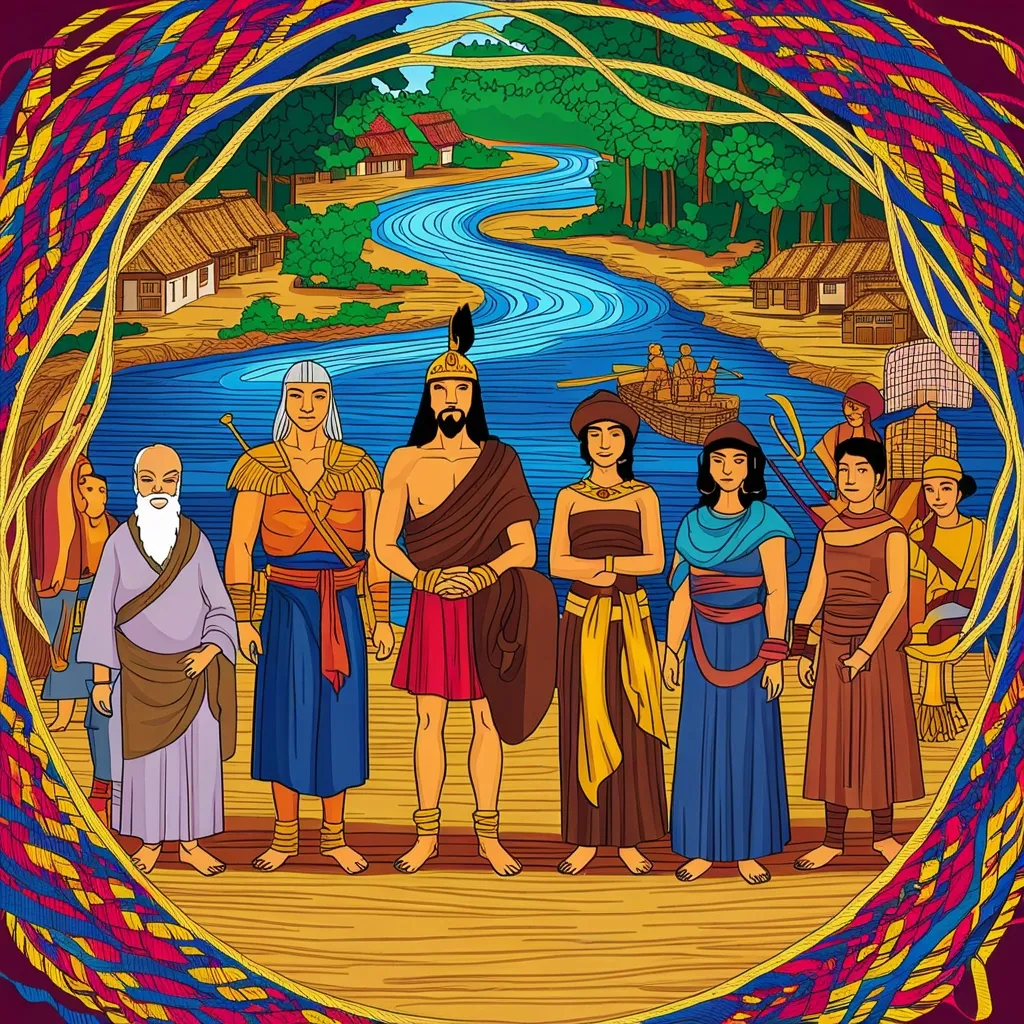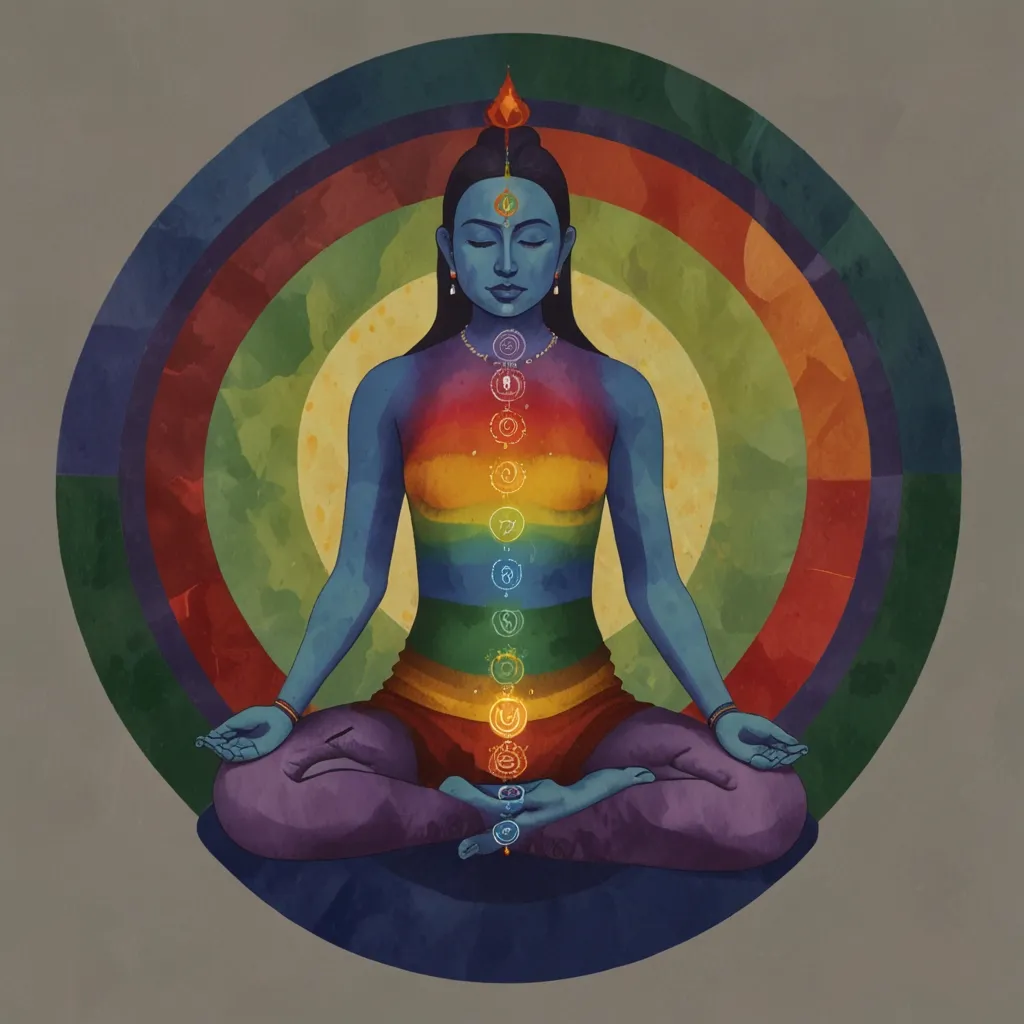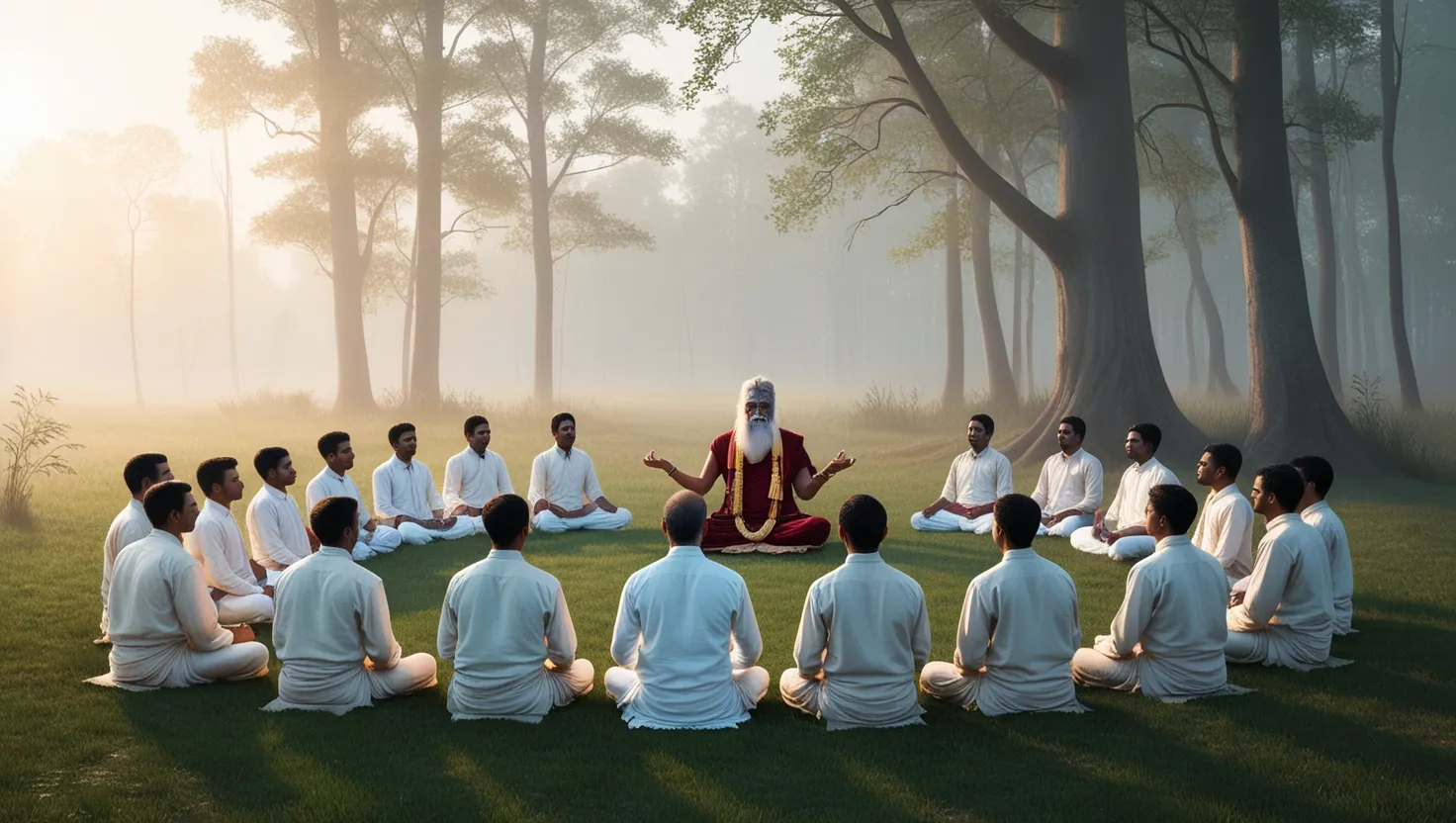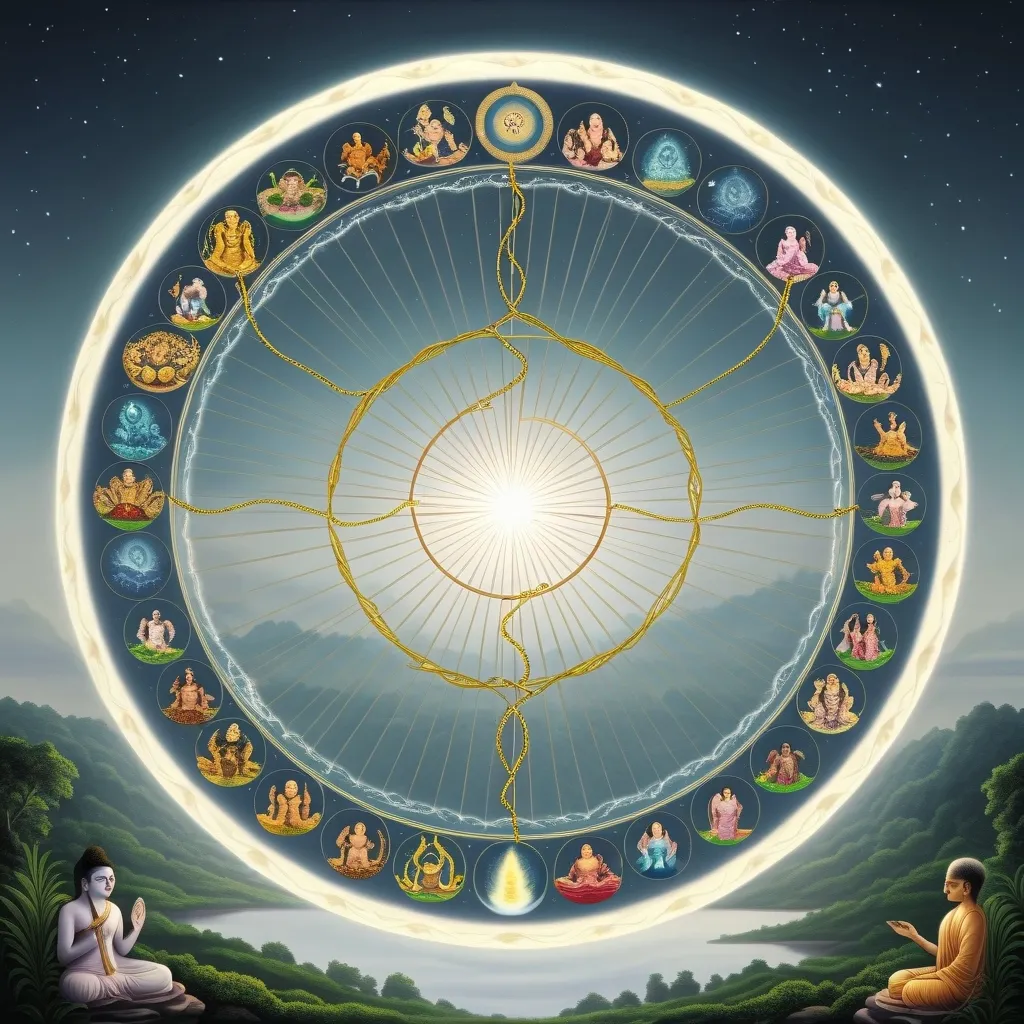In the heart of Hindu philosophy lies a profound system known as Varnashrama Dharma. Think of it as a vibrant tapestry weaving together the social structure and personal journey of life. It’s like a well-oiled machine where every cog matters, ensuring society’s smooth sailing while nurturing personal growth at each stage of life.
Divvying Up Society: The Four Varnas
Picture society as a grand play, and the four varnas as the principal roles in this epic saga. Each varna adds its unique flavor, with specific duties ensuring the show goes on without a hitch.
First up, the Brahmins. These are the intellectual powerhouses, the priests, and teachers who spread the sacred knowledge of the Vedas. They’re like society’s compass, guiding religious and intellectual pursuits alike.
Next, the Kshatriyas strut onto the stage with their warrior-like aura. They are the protectors, governors, and leaders, always ready to stand tall and defend their community. Courage and justice are their guiding light, ensuring order amidst chaos.
Enter the Vaishyas, the merchants, farmers, and tradespeople. They are the economic engines, keeping the wheels of commerce and agriculture well-oiled. Their knack for generating wealth is pivotal for society’s sustenance.
Bringing up the rear are the Shudras, the artisans and workers. They’re the unsung heroes, providing essential services and craftsmanship that keep the entire edifice running smoothly.
Life’s Journey: The Four Ashramas
The human life is seen as a journey through four distinct ashramas, each bringing its own purpose and responsibilities. This journey is much like a play, with each act building upon the last towards an ultimate crescendo.
The curtain rises with the Brahmacharya Ashrama. This stage is all about learning; it’s where the young absorb wisdom like sponges, under the watchful eyes of their teachers. It lays the groundwork for everything to come, emphasizing discipline and learning.
Act two is Grihastha Ashrama, the phase of household life. Here, individuals find their groove, starting families and participating actively in their professions. It’s the stage of balancing acts where personal aspirations mesh with familial and social duties.
As the play transitions to Vanaprastha Ashrama, the tone becomes reflective. Individuals gradually detach from worldly responsibilities, finding solace in spiritual pursuits. This stage is about contemplation, signifying a gentle winding down from the hustle and bustle.
And finally, the apotheosis arrives with Sannyasa Ashrama. Renunciation and the pursuit of spiritual enlightenment become the sole focus. It’s about letting go of worldly ties and things, like a wise sage who shares his insights, travelling lightly yet impacting deeply.
Harmonizing Varnas and Ashramas
Imagine the varnas as different instruments in an orchestra and the ashramas as movements in a symphony. Together, they create a life of harmony. Each varna gels into these stages seamlessly, with roles and responsibilities shifting smoothly as life progresses. A Brahmin’s early days might be spent in learning, shifting to teaching, then guiding society spiritually as life unfolds.
This holistic nature of Varnashrama Dharma ensures everyone has a meaningful role while also focusing on personal growth. It’s like a dance, where one’s rhythm blends with larger community needs, morphing from active engagement to spiritual depth.
Life’s Grand Pursuits: Purusharthas
Central to the Varnashrama Dharma are the Purusharthas, life’s goals that guide every individual: Dharma (duty), Artha (wealth), Kama (pleasure), and Moksha (liberation). They’re life’s treasures — more about aligning life’s purpose rather than a scavenger hunt for material. Each ashrama orbits around these, with life beginning under the banner of Dharma, expanding into Artha and Kama, before culminating with Moksha.
As a student (Brahmacharya), the focus is pinpointed towards Dharma, igniting a spark in young minds about duty and moral compass. The householder (Grihastha), meanwhile, juggles Dharma, Artha, and Kama, like a juggler balancing family, career, and personal happiness.
When life steps into Vanaprastha, the eyes turn back to Dharma and Moksha, seeking spiritual clarity and detachment from everyday chaos. Finally, the renunciate (Sannyasa) delights solely in Moksha, as the quest for liberation takes full precedence.
Keeping it Real: Modern Spin on an Age-Old System
Let’s zoom into the modern world. Although Varnashrama Dharma was initially a strict template based on birth, the winds of change demand flexibility. Society’s evolution suggests roles should align more with one’s natural talents and desires, not just heritage. It’s about the open highway of choice and equality over rigid paths.
Despite its ancient roots, the Varnashrama Dharma is still relevant. The depiction of life as a journey ensures each person contributes meaningfully to society while fostering personal growth. It teaches us to juggle demands, strive for balance, and ultimately, seek spiritual self-realization.
Wrapping it Up
The beauty of Varnashrama Dharma lies in its layered complexity. It’s an elegant blend of societal roles with life stages, culminating in a guide for a well-rounded, fulfilling existence. Through duty and personal development, it charts a course from activity-filled life towards a path of contemplative peace and enlightenment. All this makes it an inspiring beacon, offering wisdom that transcends time, serving as a compass in our continual search for meaning and purpose.






